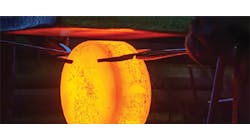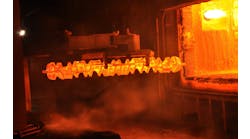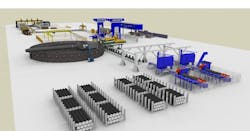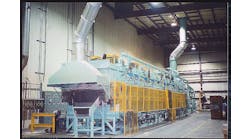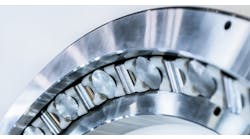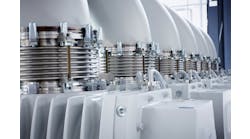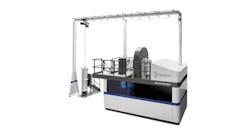A: The most complex requirements for control and documentation are for aircraft-quality forgings. Typical specifications of aircraft companies include suggestions for temperature calibration systems, record keeping, how often and how long the records must be kept, and other details relating to verifying temperatures used for the parts to be forged. Some require strip or circular charts to be recorded and filed for several years, along with companion records on the heats of steel used and the die numbers that appear on the forgings as heat or lot codes.
Mil-Q-9858 is a familiar military specification that details quality standards relating to many functions, as well as temperature controls in the forge. It’s a good reference when forging aircraft-quality parts.
For automotive and truck forgings, record-keeping requirements are less critical. However, it is good to keep records of maintenance and calibration actions on forging furnaces, similar to what is done in heat-treat shops.
The automotive industry observes the ISO 9000 quality-control standard and, more currently, the QS 9000 specification. These are somewhat of a consolidation of Ford’s Q1, GM’s Targets of Excellence, and Chrysler’s Pentastar specifications, among others.
At a very minimum, furnace controls and recording devices should maintain metal temperatures at the levels needed for specific grades of steel being forged. It is common to have recording and control couples in the hot zone of the furnace, and desirable to have reading couples in other zones, to verify temperature uniformity.
Temperature calibration systems—Furnace temperature uniformity studies can be performed in various ways, such as burying thermocouples in blocks of steel similar to what’s being heated. These temperature “blocks” are placed on the hearth along with the billets being heated to record the temperature of the steel, by zone.
For furnaces wider than about 5 ft, it is common to use two calibration blocks—one for each side of the furnace. Such calibration studies are generally done after each furnace rebuild or major repair.
A simpler technique, and just as accurate but less documentable in terms of a direct reading chart, is using a “black body” system. This is done by drilling a 3/4- to 1-in. diameter hole into a scrap billet comparable in size to the stock being heated, then sighting a radiation or hot-wire pyrometer into the hole (which gives a black body condition) and then reading and recording the resulting temperature. In this author’s experience, the most accurate pyrometer for this purpose is the disappearing wire pyrometer type like the familiar Leeds & Northrup pyrometers.
As the heated block reaches the discharge zone, the optical reading is taken and noted. This is a very accurate system and does not require expensive platinum/rhodium type thermocouples often used in the “hard-wired systems.”
Various specifications require different durations for re-calibrations. Regardless, it is good practice to perform calibration studies on virtually all heating furnaces for alloy and higher-carbon steels to prevent overheating.For more than 40 years H. James Henning held key technical positions in the forging industry, including as director of technology for the Forging Industry Association, and as president of Henning Education Services, a Columbus, OH, firm specializing in customized education and training in forging technologies.
Guidelines and recommendations offered in this column are based on information believed to be reliable and are supplied in good faith but without guarantee. Operational conditions that exist in individual plants and facilities vary widely. Users of this information should adapt it, and always exercise independent discretion in establishing plant or facility operating practice.
